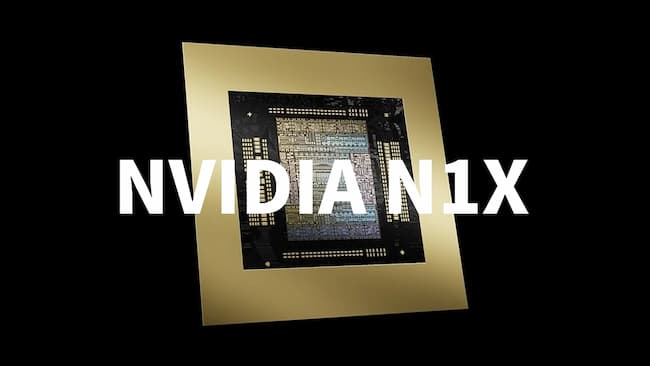The latest rumours concerning Nvidia’s N1X SoC were not very favourable, with the launch postponed to 2026 due to (it seems) design problems. As a reminder, the arrival of Nvidia’s ARM SoC should shake up the market. This chip, which could have a portable and a desktop version , is intended for Windows PCs in the same way as ARM Snapdragon SoCs, for example. In the last few hours, the GPU part of this SoC has appeared in Geekbench’s OpenCL details. While data on the CPU part had already leaked out, this is the first time we’ve been able to get an idea of the graphics potential of the Nvidia solution.
The GPU part of the N1X SoC is based on Blackwell architecture. We discover that the number of cores on the SoC is equivalent to that of the RTX 5070, i.e. 6,144 cores, structured within 48 SM units. At this stage, this strong similarity doesn’t necessarily mean that the N1X has a GPU part comparable to the RTX 5070. We could just as well be looking at a specific variant.
Features that resemble the RTX 5070…but not by a long shot.
The meagre data displayed by Geekbench make it clear…That it’s still difficult to make up one’s mind. First of all, this document shows that the N1X’s GPU barely runs at a frequency of 1.05 GHz. This is well below the speed of the RTX 5070. What’s more, the chip has no dedicated memory, as the SoC uses shared memory for its GPU and CPU. The N1X uses LPDDR5X memory, shared by the entire SoC. This memory is clearly less powerful than dedicated GDDR7, enabling bandwidth of up to 672 GB/s. While today’s findings on memory should not be affected by any surprises, the GPU’s operating frequency is obviously likely to change.
So the performance displayed in Geekbench is likely to change also. All the more so as we’re still looking at a prototype that the Greens will be optimizing before launch. However, with a score of 46,361 points, the N1X stands head and shoulders above the other iGPUs on the market. But it’s against the Ryzen AI Max or Z2 extreme that Nvidia’s SoC is expected to deliver in terms of both performance and efficiency.

